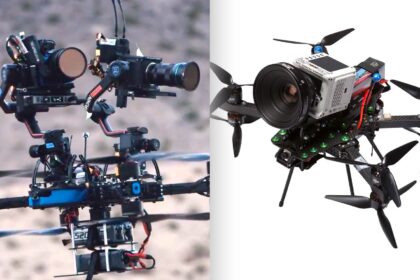Choosing the right tripod can make a noticeable difference in your photography or videography experience. Among today’s top options, carbon fiber and aluminum tripods stand out as the two most popular materials. Each offers unique benefits, and understanding these differences can help you select the perfect support system for your camera setup. This guide breaks down their pros, cons, durability, weight, stability, and overall value, helping you make the most informed decision.
- What Are Carbon Fiber Tripods?
- What Are Aluminum Tripods?
- Carbon Fiber Tripods: Pros and Cons
- Aluminum Tripods: Pros and Cons
- Carbon Fiber vs Aluminum Tripods Comparison Table
- Which Tripod Material Is Best for You?
- Reviews: What Users Say About Both Tripods
- Buying Guide: Factors to Consider Before Choosing
- Conclusion
- Frequently Asked Questions
What Are Carbon Fiber Tripods?
Carbon fiber tripods are made from woven carbon strands bonded with resin. The result is a durable, lightweight, and vibration-resistant material. These tripods are favored by professional photographers and videographers who need top-tier stability without carrying heavy gear for long hours.
What Are Aluminum Tripods?
Aluminum tripods use metal tubing that has been a standard for decades. Known for their durability, affordability, and strong load capacity, aluminum tripods remain popular among beginners and hobbyists. Although heavier than carbon fiber, they deliver reliable performance and stability at a lower price point.
Carbon Fiber Tripods: Pros and Cons
Pros of Carbon Fiber Tripods
- Lightweight construction
Carbon fiber tripods are significantly lighter, ideal for travel, outdoor shoots, and long-distance carrying. - Excellent vibration resistance
The material dampens vibrations better than aluminum, giving sharper, more stable shots, especially during long exposures. - Weather resistance
Carbon fiber does not corrode or rust, making it suitable for harsh environments like beaches, humid areas, or snowy landscapes. - Strong weight-to-strength ratio
They support heavy camera setups without adding unnecessary weight.
Cons of Carbon Fiber Tripods
- Higher cost
Carbon fiber tripods are premium products, often priced much higher than aluminum models. - Potential brittleness on severe impact
While strong, carbon fiber can crack if it suffers a direct, hard impact. - Not the best choice for tight budgets
Beginners may find the investment challenging unless they prioritize lightweight gear.
Aluminum Tripods: Pros and Cons
Pros of Aluminum Tripods
- Affordable pricing
Aluminum tripods offer excellent value and are ideal for first-time buyers. - High durability
These tripods handle bumps, rough use, and minor impacts better than carbon fiber. - Strong load capacity
They can hold heavy cameras, long lenses, and video rigs reliably. - Stable even in moderate wind
The added weight helps maintain stability in windy outdoor conditions.
Cons of Aluminum Tripods
- Heavier than carbon fiber
This makes them less ideal for travel photographers or hikers. - Susceptible to corrosion
Aluminum can rust or corrode over time when exposed to moisture or salty environments. - Heat and cold conduction
Aluminum legs get hot in summer and extremely cold in winter, affecting usability.
Carbon Fiber vs Aluminum Tripods Comparison Table
| Feature | Carbon Fiber | Aluminum |
|---|---|---|
| Weight | Very lightweight | Moderately heavy |
| Durability | High (may crack on severe impact) | Very high (can withstand rough handling) |
| Vibration Resistance | Excellent | Good |
| Weather Resistance | Excellent | Moderate |
| Stability in Wind | Good | Very good |
| Cost | High | Low to moderate |
| Ideal For | Travel, professional photography | Beginners, studio work, budget buyers |
Which Tripod Material Is Best for You?
Choosing between carbon fiber and aluminum depends on your priorities. If your workflow involves frequent travel, outdoor shoots, or long hikes, a carbon fiber tripod offers unbeatable portability and vibration damping. It’s a worthwhile investment for professionals and serious enthusiasts.
On the other hand, if you’re working on a budget, frequently shoot in controlled environments, or need a dependable tripod that can handle rough usage, an aluminum model may be the better choice. Its durability and affordability make it a strong option for beginners or studio photographers.
Reviews: What Users Say About Both Tripods
Carbon Fiber Tripod Reviews
Many users love the lightweight nature of carbon fiber tripods, especially when traveling or shooting landscapes. Photographers highlight the noticeable reduction in camera shake during long exposures and macro shots. The premium build quality is also frequently praised.
However, some users mention concerns about the higher price and the possibility of cracks after hard impacts.
Aluminum Tripod Reviews
Users appreciate aluminum tripods for their stability and cost-effectiveness. Beginners often prefer them because they offer professional performance without a high investment. They are also praised for handling heavy gear well.
The main complaints revolve around weight, making them less ideal for long-distance carry.
Buying Guide: Factors to Consider Before Choosing
Weight and Portability
If you travel a lot or shoot outdoors frequently, weight becomes a major factor. Carbon fiber is the clear winner here.
Budget
If you’re budget-conscious, aluminum tripods offer excellent value.
Durability and Usage Conditions
For rugged, everyday use, aluminum tripods hold up better to rough handling. For moisture-heavy or variable weather environments, carbon fiber is more reliable.
Stability Requirements
If you often shoot long exposures, carbon fiber’s vibration dampening helps. If you photograph in windy areas, aluminum’s weight provides an advantage.
Load Capacity
Both materials can support heavy setups, but check the tripod’s specific load rating before buying.
Conclusion
The choice between carbon fiber and aluminum tripods ultimately depends on your shooting needs, budget, and priorities. Carbon fiber offers unmatched portability and vibration resistance, making it ideal for professionals and outdoor photographers. Aluminum delivers reliability and affordability, favored by beginners and studio shooters.
Both materials have their strengths, and selecting the right one ensures better stability, sharper images, and a smoother workflow. For more tripod guides and camera accessories, you can explore options at cameraholder
Frequently Asked Questions
Is carbon fiber better than aluminum for tripods?
Carbon fiber is better for travel, lightweight support, and vibration control. Aluminum is better for budget buyers and rough handling.
Do carbon fiber tripods last longer?
Yes, they resist corrosion and weather damage, although severe impact can cause cracks.
Are aluminum tripods good for beginners?
Yes, aluminum tripods are affordable, durable, and reliable for entry-level photographers.
Why are carbon fiber tripods so expensive?
The material manufacturing process is complex, and carbon fiber offers superior performance, which increases cost.
Which tripod is more stable in wind?
Aluminum tripods are generally more stable due to their heavier build.




